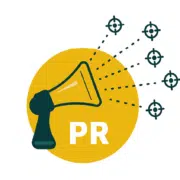Inconsistent Messaging Costs Money
If a client asked about your message, would your CEO give a similar answer as a front-line person? Not necessarily word for word but would the gist of it be the same? Would everyone at the front desk even give a similar answer? If the answer is no, or you’re unsure, it may be time to ask if your entire company is engaged in what your brand stands for.
By now, most of us have heard about the stringent rules that Disney has in place for their “cast members.” While some of them may seem a bit absurd – like how to pick up garbage – it does create a cohesive brand across the entire organization. Disney has concentrated its efforts on ensuring guests have the same experience at Disneyland as they do at Epcot.
Why is this important? Marketing strategies are designed to get your clients in the door. However, your staff has the most decisive impact on whether someone makes a purchase or engages with your organization. A joint study by InnerView & FocusVision showed that companies with a revenue of $250 million-plus were looking at a loss averaging $10 million dollars annually when the messaging gets diluted.
What can you do about it?
Define your message with a variety of input.
Take the time to facilitate a conversation about what your brand is, who your audience is and what your goals are even if you think you already know. I have sat in on several facilitations Chartwell has conducted and it never fails to amaze me how much the message changes from the start of the meeting to the end. For example, what one group thinks is a key audience may be completely different than another group. Without an aligned vision between all parties, how can anyone hope to share the same message or work toward the same goal?
Share your message internally.
We would like to believe that we’re one happy family in an organization, but often each department exists in its own silo. If you’re looking at a rollout campaign for a new product, service line or brand story, consider the launch of an internal rollout to be just as important as the rollout to your clients. This has shown to lead to increased customer engagement, satisfaction and loyalty. This is just as true during a crisis. Make sure that any information you have is shared with your staff as much as with the public. No one wants to find out from a customer what’s going on within their own organization, whether positive or negative. Having been in that position myself, it’s embarrassing and leads a to a general dissatisfaction with the organization itself. Not the reaction any organization is looking for in its front-line staff.
Be consistent.
While trends exist for a reason, they can cause confusion when it reflects in your messaging. There is enough noise out there to sort through without a brand constantly redefining itself. Make sure that the message you’re sharing is the same across every platform and with every member of your organization. This creates a strong identity that can set you apart from your competitors. This doesn’t mean you can’t tailor your message to suit your audiences. However, a well-defined, strong message will ensure you’re not communicating different messages to different groups.
By ensuring your message is clear and well-defined, you can plan consistent strategies that not only engage your clients but your employees, as well. If you think you need help with this, Chartwell offers sessions in strategic facilitation and training to make sure your message is clear, engaging and effectively communicated.









